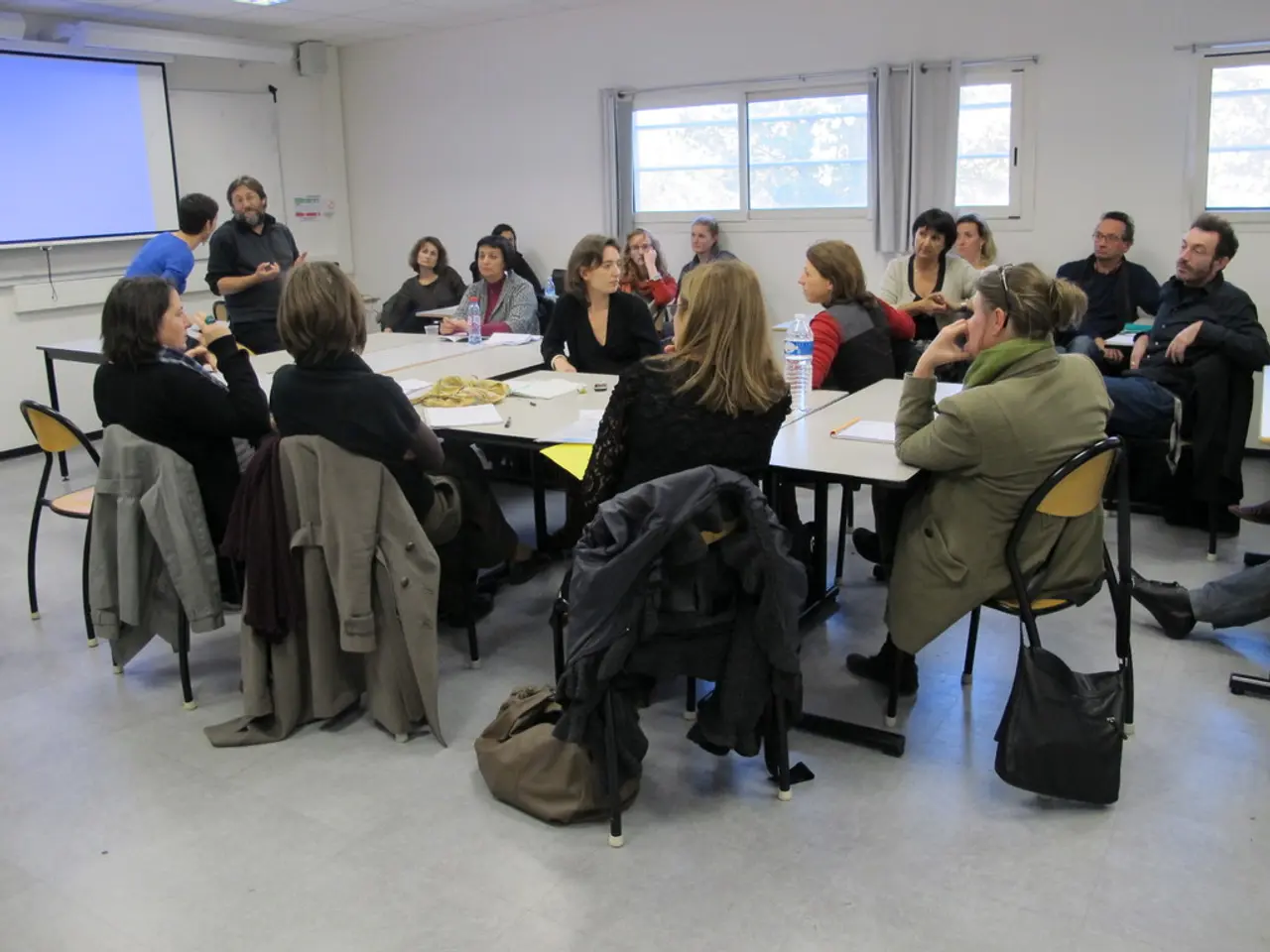Avoid Group Conformity for Independent Thought
In the pursuit of fostering innovation and avoiding the pitfalls of groupthink, it's crucial for teams to implement specific strategies that encourage diverse thinking, psychological safety, and active inclusion of dissenting views. Here are key practices drawn from recent expert guidance:
1. **Keep groups small and diverse**
Small groups of around five members are ideal to reduce diffusion of responsibility and bias. Include people from different backgrounds, skills, genders, and perspectives to bring in unusual ideas and avoid homogeneous thinking.
2. **Create a psychologically safe environment**
Encourage anonymity in idea sharing, such as collecting suggestions independently before group discussion, so everyone can speak freely without fear of judgment. Protect dissenting voices; actively solicit reservations and listen genuinely to concerns rather than dismissing them. These contrarian insights can be early warnings of flaws.
3. **Use structured brainstorming techniques**
Use "silent brainstorming," where participants write down ideas before any discussion to prevent the first speaker from anchoring or biasing others. Assign a "devil's advocate" role to challenge assumptions and encourage critical thinking.
4. **Encourage experimentation and learning**
Promote a culture of rapid prototyping and "fail fast, learn fast" to iterate on ideas quickly and treat failures as learning opportunities. Monitor industry trends and competitors to inspire new perspectives and avoid blind spots.
5. **Avoid over-reliance on experts and dominant voices**
While experts have valuable knowledge, listen to all participants equally to surface non-obvious solutions and reduce dominance bias. Use consent-based decision-making rather than seeking full consensus to prevent pressure for uniform agreement and encourage genuine buy-in.
6. **Challenge assumptions and unconscious bias**
Foster awareness of biases by encouraging cross-functional collaboration and mentoring relationships that broaden interactions beyond usual groups. Regularly question underlying assumptions within the group to open pathways for innovative ideas.
By combining these approaches, teams can break free from the traps of groupthink, create a safe space for innovative and critical ideas, and ultimately reach better, more creative decisions. Agreeing on the why of the problem and then how the solution would be implemented can boost group morale. Treating the proposal as an interim solution helps members avoid pressure to ensure a correct solution.
Organisations often create task forces to solve complex problems, and research shows that groups can come up with more accurate estimates than individual experts on difficult problems. However, larger pools of knowledge are no guarantee of better outcomes in group discussions. The strategies to steer clear of groupthink can help mould consensus among team members, leading to more accurate and innovative solutions.
In the realm of these teams and their pursuit of innovation, strong financial backing can empower them to invest in resources and ideation sessions that promote diverse thinking effectively. Moreover, a purposeful leadership, mindful of these strategies, can guide business decisions towards enhancing psychological safety, fostering critical thinking, and ultimately leading to more accurate and creative solutions.




